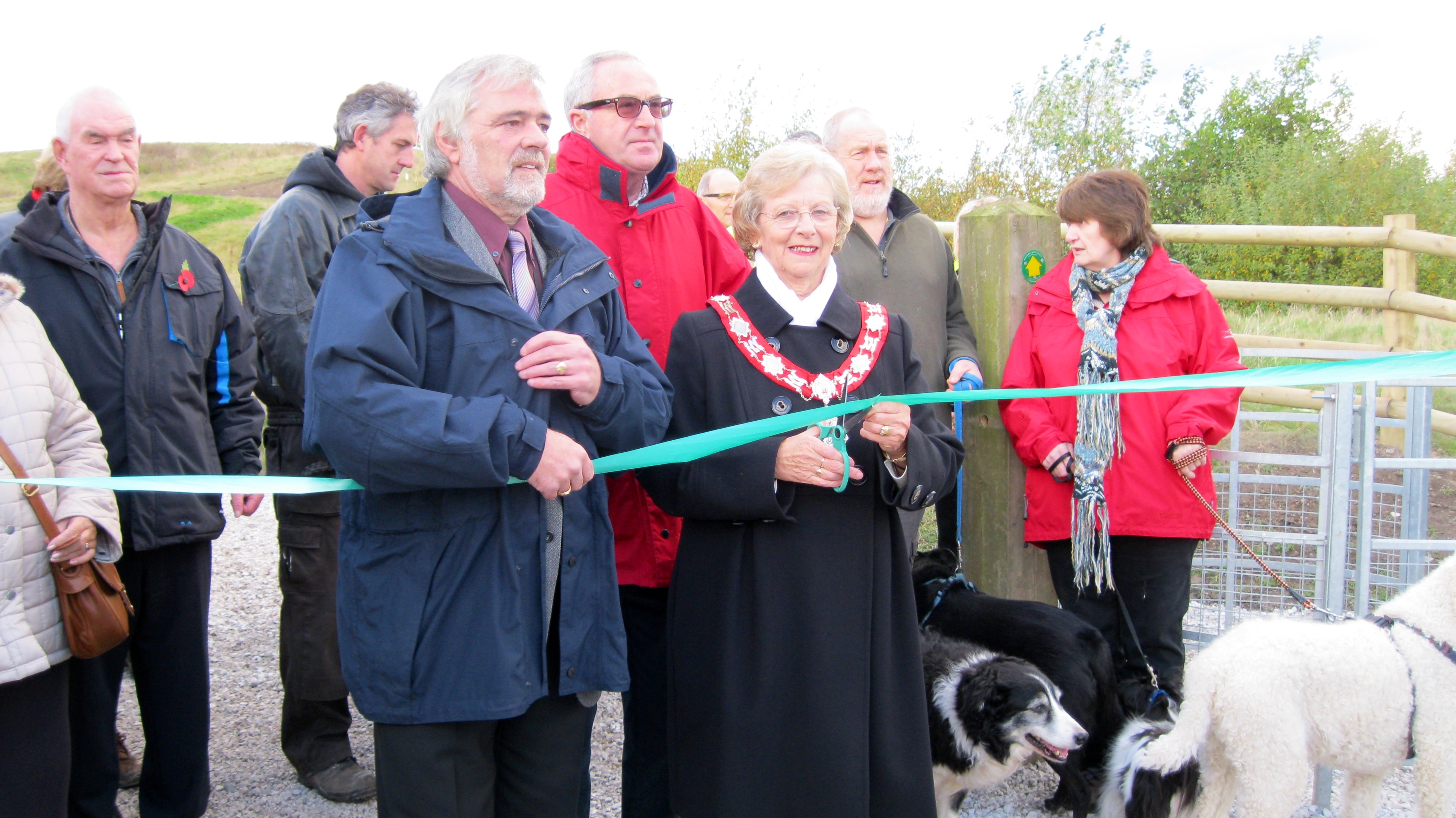
The Official Opening of the Standard Landfill Site Public Footpaths"
Standard Landfill Site, Spencer's Industrial Estate, Globe Way, Drury
29 October 2012
This was the second landfill site in Buckley to be landscaped and opened to the public for their enjoyment, the first being Etna. There were several footpaths which traversed the site previous to its being used for landfill and they have been reinstated, there being 1.2km in total.
The site, the former clay pit for the Standard, received 1.2m tonnes of municipal, commercial and industrial waste before its closure in 2004. Flintshire County Council continue to manage the site for its biodiversity and amenity value. It was designed to be accessible from the industrial estate road and nearby footpaths.
At its peak is a "toposcope" pointing out the various views to be seen across Flintshire and the River Dee.
There is a notice nearby which explains the system for collecting gas produced from the anaerobic decomposition of the waste material.
POSTER TEXT
Landfill Gas Collection System
Standard Landfill restoration is designed in such a way that it prevents greenhouse gases from migrating into the atmosphere while avoiding offensive smells and reducing risk of fires, the gas must be continuoulsy extracted under controlled conditions. Perforated tubes are drilled into the landfill body and are interconnected by a series of underground pipe systems. Gas is extracted from the landfill using pumps and blowers, it is drawn to the main collection pipes via several manifolds and strategically located gas exit points, which are placed at regular intervals within the closed landfill site. The collected gas is then utilised as fuel to power an engine, which in turn runs a generator which produces electricity to supply the local electricity network. Leachate and condensate are also collected using a system of compressed airpumps that can be heard opening during the pumping cycle. These liquids are stored in tanks and then taken off site to be processed in a biological treatment plant - thus ensuring a more efficient gas collection, as well as stable gas quality.
1 Million tonnes of organic waste can generate 1.7 - 2.5 million m3 of collectable methane, enough to fuel a gas engine capacity of 850 - 1.250 kWe producing 6,500 to 10,000 MWh of electricity per year. That roughly corresponds to the avarage power demand of 1,500 to 2,2000 households.
Quantity and Composition of Landfill Gas
Waste contains approximately 150 - 250kg of organic carbon per tonne which micro-organisms convert to landfill gas via anaerobic processes. The gas formation is influenced by a number of factors such as waste compostition, landfill storage height and density, air temperature, atmospheric pressure and precipitation levels. Gas production starts one to two years after the waste is deposited in the landfill and can last between 15 - 25 years. With a calorific value of 3.5 to 5.5kWh Nm3 (35-55% methane), landfill gas constitutes a high-value fuel for gas engines that is effectively used for power generation.
NOTE: Gas wells are enclosed in large concrete rings with inspection covers and are kept locked for your safety!
Author: Anon
Tags
Year = 2012
Month = October
Day = 29
Event = Historic
Gender = Mixed
Landscape = National Park
People = Group
Extra = 2000s
Copyright © 2015 The Buckley Society
